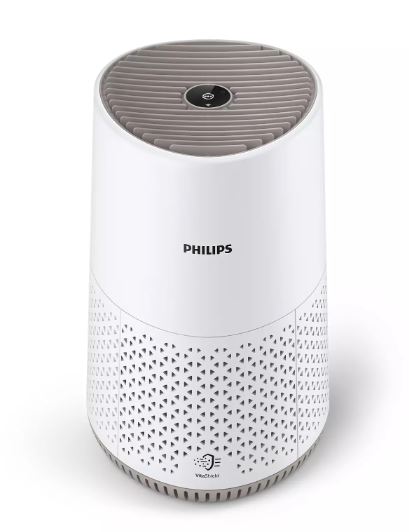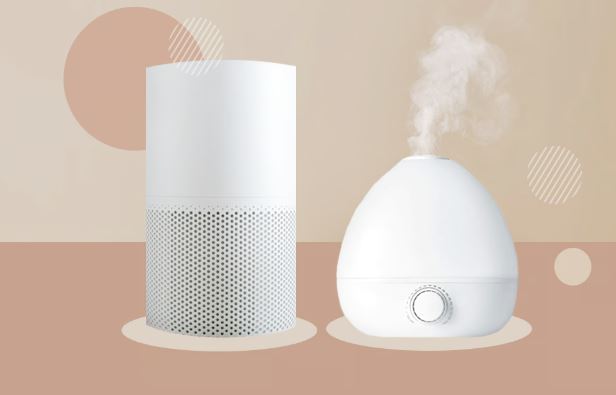Protect Your Family from Hidden Dangers: Air Purifiers for a Safer Home
Protect Your Family from Hidden Dangers: Air Purifiers for a Safer Home
Blog Article
In today's health-focused society, the air quality indoors and out has become a prominent focus for many people. With growing concerns over air pollution and a greater awareness of the influence of indoor air quality on overall health on our health, it's no surprise that the demand for air purifiers is on the rise.
Air purifiers are appliances that remove contaminants from the air in a given area, enhancing the air we breathe indoors. They are particularly beneficial for people with allergies, asthma, or other respiratory issues as they can significantly lower the levels of allergens, pollutants, and irritants in the air. Even healthy individuals can take advantage of air purifiers, as they provide reassurance and safeguard against airborne diseases.
This comprehensive overview will delve into the intriguing world of air purification, discussing the perks they offer, the different types available, essential factors when selecting the right model, and maximizing your air purifier's potential. By the end, you should have a solid comprehension of air purifiers and be able to make an informed decision about whether investing in one is the right choice for you and your family.

Decoding Air Pollutants and Their Effects on Well-being
To understand why air purifiers are essential, it's vital to understand the variety of contaminants they address and the likely impact of prolonged exposure.
Indoor air pollutants can be broadly categorized into three main types:
- Particulate Matter: This includes solid and liquid droplets present in the air. Examples include pollen, smoke, dust, pet dander, and mold spores, to name a few. Particulate matter can lead to respiratory complications and set off allergic responses.
- Volatile Organic Compounds (VOCs): VOCs are gases emitted from various solids or liquids. Sources of VOCs include paints, cleaning products, aerosol sprays, and pesticides. Exposure to VOCs can lead to eye, nose, throat irritation, headaches, and stomach discomfort.
- Biological Hazards: These include bacteria, viruses, mold, and mildew. They can cause a spectrum of health concerns, from minor allergies to serious infections.
The consequences of exposure on human health can vary significantly. For people with respiratory issues or a vulnerable immune system, exposure to indoor air pollutants can lead to severe complications. For those in good health, chronic exposure to certain pollutants can contribute to the development of respiratory issues and other health problems over time.

The Science Behind Air Purifiers
Air purifiers use a combination of physical and chemical processes to effectively eliminate contaminants. Understanding the fundamental processes employed by purifiers will help you grasp how they work and the array of models on the market.
Here are the core processes and cutting-edge technologies used in air purifiers:
- The Power of Mechanical Filtration: This is the most widely used approach used in air purifiers. It involves using filters designed to trap airborne particles as air is passed through the filtration system. The filter composition can differ, each designed to target specific particle sizes and types. For example:
- Pre-filters: The First Line of Defense: These are usually the initial barrier, trapping bigger contaminants like hair and dust.
- HEPA (High-Efficiency Particulate Air) filters: HEPA filters are remarkably proficient at trapping ultrafine particles, including dust mites, pollen, bacteria, and viruses. To be labeled a true HEPA filter, it must capture at least 99.97% of particles as small as 0.3 microns.
- charcoal filtration: These filters are designed to effectively remove odors, VOCs, and gaseous compounds.
- Ionizers: Charging Ahead: Ionizers use charged particles to create an abundance of negative ions, which latch onto airborne particles. The charged particles are drawn to nearby surfaces or the purifier itself.
- Ozone's Double-Edged Sword: Some air purifiers use ozone, a powerful oxidant, to break down pollutants. While effective, excessive ozone exposure carries risks so these types of purifiers should be used with moderation and in well-ventilated areas.
- Ultraviolet (UV) Light: UV light can be used to neutralize bacteria, viruses, and mold spores. UV light is commonly paired with filtration to trap particles, and UV light provides an extra layer of protection against biological hazards.
Choosing the Right Air Purifier
With a wide array of options available, selecting the ideal air purification system can be a challenging endeavor. It's important to consider several factors to ensure you make the right choice for your particular needs and room size.
Here are some crucial points to consider:
- Considering Room Size: Air purifiers are typically rated for specific room sizes, so it's important to choose a model that can efficiently purify the air in the designated space. Most purifiers will list a maximum room coverage or CADR, which indicates the amount of purified air circulated per minute.
- Understanding Contaminants: Identify the particular contaminants you want to target. If you suffer from allergies, look for a purifier with a true HEPA filter. For odor removal, consider a model with a activated carbon filter. If you're concerned about bacteria and viruses, a purifier with UV-C light might be best.
- Noise Level: Air purifiers can produce different noise levels, so if you plan to use it in a serene environment, look for models with a sleep mode or quiet setting.
- Maintaining Performance: Consider the ongoing costs and maintenance requirements of the purifier. HEPA filters generally require replacement every 6 to 12 months, depending on use and environmental factors. Factor in the cost of replacement filters when making your choice.
- Additional Features: Many purifiers offer innovative smart capabilities like wireless connectivity, air quality sensors, and smart modes, allowing remote control and monitoring. These features can improve your purifier's performance and ease of use.
Optimizing Performance of Your Air Purifier
Once you've made your selection and installed it, there are several things you can do to ensure it operates at optimal levels and delivers the greatest advantages:
- Optimal Placement: Position your purifier in an unobstructed area, avoiding walls and furniture, to ensure optimal airflow. Avoid placing it near windows or doors as drafts can disrupt the purifier's effectiveness.
- Round-the-clock Operation: For the best results, it's recommended to run your purifier regularly. Many models have energy-saving features or smart modes that adapt to the air quality, so you can maintain clean air without running up a huge energy bill.
- Regular Filter Care: Regularly adhere to the recommended filter replacement schedule. Over time, filters become saturated with particles, affecting efficiency. Set a reminder for filter changes so you don't forget.
- Minimize Indoor Pollutants: Alongside using an air purifier, take steps to minimize indoor air pollutants. This could include vacuuming, dusting, choosing natural cleaning alternatives, and limiting aerosol and chemical products. Report this page